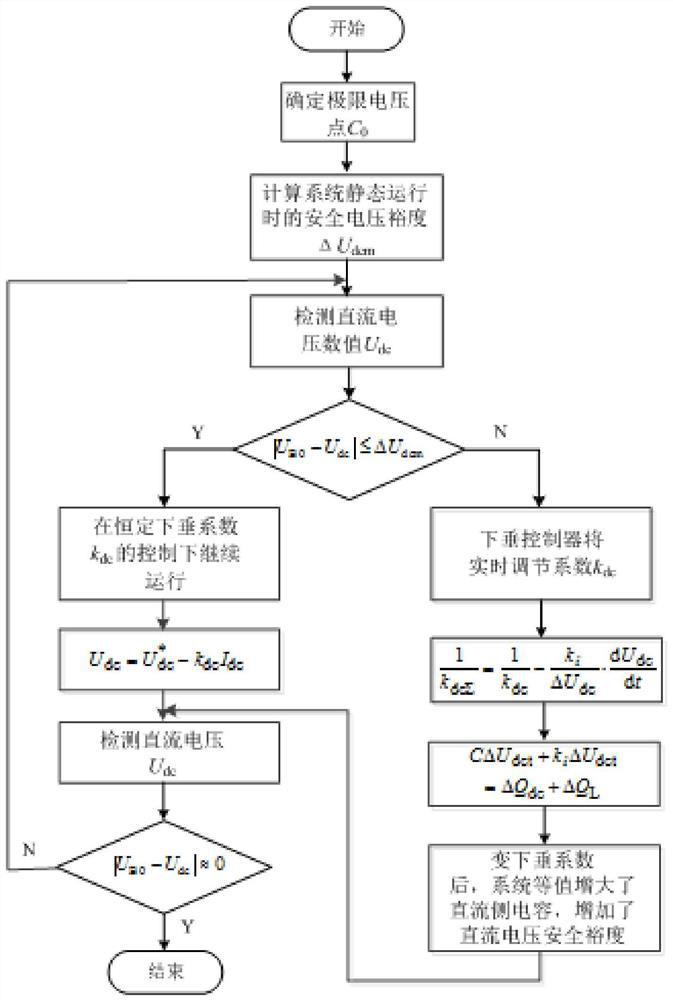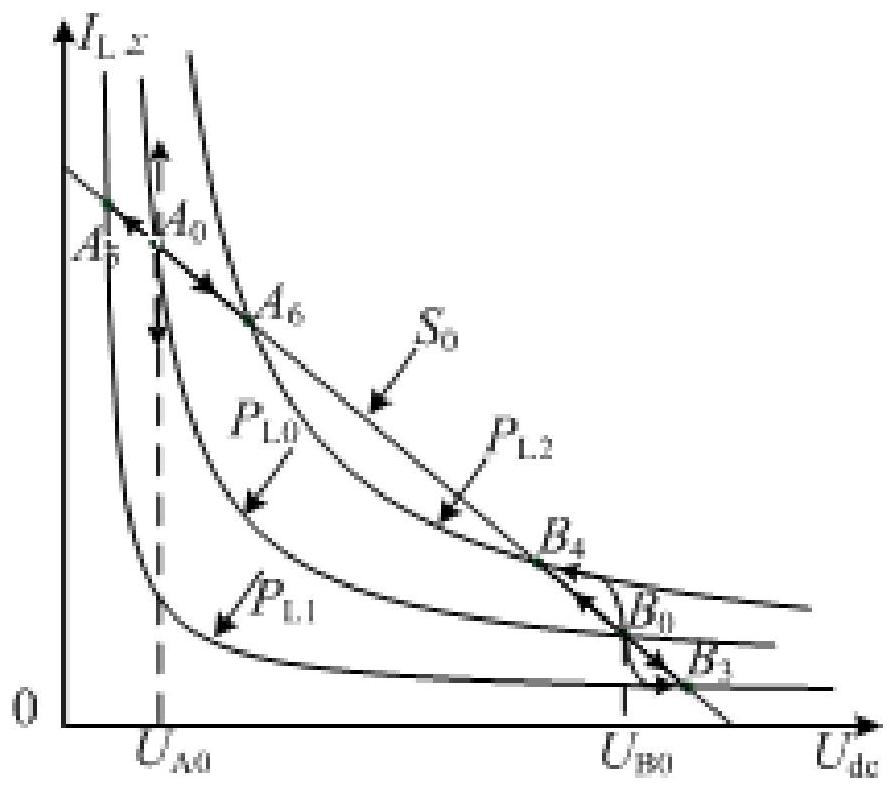Method of DC Grid Voltage Transient Stability Restoration Control Based on Additional Power
A DC power grid, DC voltage technology, applied in electrical digital data processing, data processing applications, instruments, etc., can solve the problems of continuous oscillation, DC bus voltage fluctuation, etc., to delay the action time, and prolong the time to drop to the limit point. Effect
- Summary
- Abstract
- Description
- Claims
- Application Information
AI Technical Summary
Problems solved by technology
Method used
Image
Examples
Embodiment 1
[0108] The present invention builds the following in the Matlab / Simulink environment. Figure 7 The multi-terminal flexible DC grid simulation model shown. The AC grid side uses the power frequency three-phase AC power supply to connect to the VSC after filtering and transforming. 1 The converter is connected to the DC grid, and the capacitor C is connected in parallel dc The voltage across both ends represents the DC bus voltage. The load side is connected to the inverter VSC with constant power control 2 , to ensure that the connected load exhibits constant power characteristics. During the simulation, the wind power generation system is regarded as an equivalent unit. The basic parameters of the simulation model are shown in Table 1.
[0109] Table 1 Basic parameters of the flexible DC grid simulation model
[0110]
[0111] Combined with the basic parameters of the flexible DC grid simulation in Table 1, according to the theoretical formulas (2) and (3), the theor...
Embodiment 2
[0113] To verify the voltage operating limit of the DC grid, by changing the VSC 1 The voltage droop in the DC voltage reference value in the controller, so that the system is in different degrees of step-down operation. The four step-down operation calculations are as follows: at 0.02s, the DC voltage droop control reference values are set to 485V, 470V, 455V, and 430V respectively, and the initial value is restored at 0.03s. The system dynamic response is as follows Figure 8 shown.
[0114] like Figure 8 As shown in the figure, as the DC voltage reference value decreases, the capacitor discharges, and the DC voltage drops rapidly from 498V in a stable operating state. After the disturbance is eliminated, the system can resume stable operation in the first two cases. In Example 3, the system runs stably around 235V, slightly exceeding the theoretically calculated operating limit of 224V. At this time, the system cannot return to the initial operating state. In calcula...
Embodiment 3
[0116] In order to further analyze the limit time of DC voltage fault removal, at the moment of 0.02s, a bipolar short-circuit fault is set at the DC bus. Under the traditional droop control, the fault is removed at different times, and the dynamic response of the system is as follows Figure 9 shown. In the five fault examples, the removal time is set to 0.025s, 0.0265s, 0.028s, 0.030s, and 0.031s, respectively.
[0117] In the first three examples, after the short-circuit fault was removed at different times, the DC bus voltage dropped to 480V, 420V, and 315V, respectively, which did not exceed the theoretical calculation limit of 224V. As shown in the figure, after the fault is cleared, the system returns to the initial stable operation state. When the fault duration is extended to 0.030s, in example 4, during the fault period, the system voltage drops to the limit voltage. Even if the fault is cleared, the system cannot return to the initial operating state. In example ...
PUM
 Login to View More
Login to View More Abstract
Description
Claims
Application Information
 Login to View More
Login to View More - R&D
- Intellectual Property
- Life Sciences
- Materials
- Tech Scout
- Unparalleled Data Quality
- Higher Quality Content
- 60% Fewer Hallucinations
Browse by: Latest US Patents, China's latest patents, Technical Efficacy Thesaurus, Application Domain, Technology Topic, Popular Technical Reports.
© 2025 PatSnap. All rights reserved.Legal|Privacy policy|Modern Slavery Act Transparency Statement|Sitemap|About US| Contact US: help@patsnap.com



